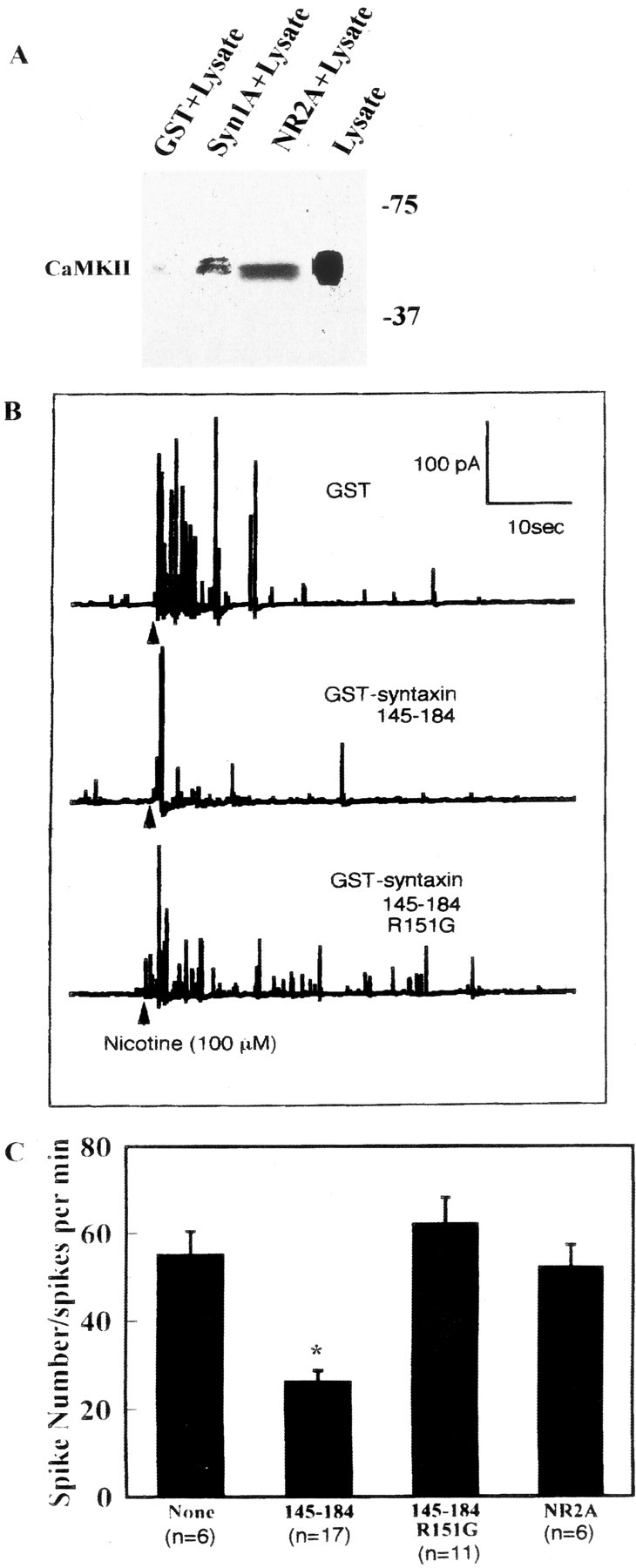Fig. 9.

Effects of a CaMKII-binding fragment [145–184] derived from syntaxin in adrenal chromaffin cells. A, CaMKII specifically bound syntaxin in chromaffin cell lysate. The molecular mass is shown on theright (in kilodaltons). This isoform was thought to be CaMKIIδ. Chromaffin cells were separated from adrenal medulla, and cell lysate was made by solubilization with buffer containing 20 mm HCl, pH 7.6, 150 mm NaCl, 1% Nonidet P-40, 1 mg/ml BSA, 1 mm CaCl2, 2 mm MgCl2, 0.5 mm ATPγS, and protease inhibitor mixtures for 2 hr at 4°C. Lysate (protein concentration 10 mg/ml) was incubated with GST, GST–syntaxin 1A [1–262], or GST-NR2A [1349–1461], and binding proteins were eluted with PreScission protease as described above (see legend to Fig. 1A). Samples were resolved by 10% SDS-PAGE and immunoblotted against anti-CaMKII pAb. B, C, Effects of microinjected syntaxin [145–184] and syntaxin ([145–184]; R151G) on nicotine-evoked catecholamine release from single chromaffin cells detected by single-cell amperometry.B, Typical catecholamine release responses of nicotine-stimulated chromaffin cells into which GST, GST–syntaxin [145–184], or GST–syntaxin ([145–184]; R151G) was microinjected. Both recombinant syntaxin fragments (15 μm) were microinjected into cytosol of chromaffin cells. C, Summary of experiments using chromaffin cells. Frequency (spike numbers) of catecholamine release was significantly lower within the CaMKII-binding fragment of syntaxin [145–184] than in cells injected with control or syntaxin fragment ([145–184]; R151G). The NR2A fragment interacted with CaMKII (A) in chromaffin cells but did not inhibit exocytosis (C). Data are means ± SEM of indicated determinations. Data are typical of several cell preparations. *p < 0.05 versus R151G. R151G and NR2A were not significantly different from controls (no addition).
